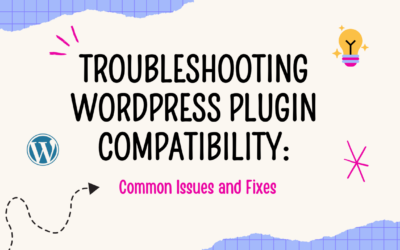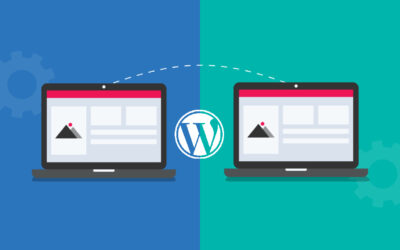Topic:- Step By Step Process to Remove Malware from Your WordPress Website
Keywords:- best WordPress malware removal, WordPress malware scanner, scan website for malware, check website for malware
WordPress has become one of the most used tools worldwide when creating a web page thanks to many templates and plugins that it provides, which allow practically anything to be done, especially the best WordPress malware removal tool.
According to WordPress, a web development company, cleaning a hacked WordPress site is not easy. Unfortunately, the security of a WordPress site is not to be taken lightly. Being hacked can happen to anyone by being a WordPress malware scanner.
Symptoms to scan website for malware on WordPress:
- Your WordPress website is redirected with WordPress malware scanner
- Browser throws a malware or site attack warning when you try to visit that URL.
- You receive a Google Search Console message saying your website is hacked or has malware as a WordPress malware scanner
- Your web host blocks your account while checking the website for malware.
- Strange URLs loading in the browser status bar when loading your website with WordPress malware scanner
Now let us see the step by step process to remove malware from your WordPress website.
Step #1: Backup the Site Files and Database:
Back up your full website if you can use the web host’s site snapshot feature. Be prepared for the download to take time because it might be quite large for best WordPress malware removal.
Login through the WordPress backup plugin, and if you can’t log in, the hackers may have compromised the database, in which case you can use WordPress Fortify. With the above steps, make a separate additional backup of the database.
The wp-content folder is the most important folder on your server, and because some sites might be quite large, you can’t run a backup plugin. Your web host doesn’t have a “snapshots” feature, and then you can use the web host’s File Manager to make a zip archive of your wp-content folder and then download that zip file.
Step #2: Download and Examine the Backup Files:
After backing up, download the backup to your computer, open the zip file. You must see:
- All the WordPress Core files – You can download WordPress from WordPress.org, check out the files in the download, and match them to your own. You may want them for your investigation into the hack late with the best WordPress malware removal
- The wp-config.php file – This contains the name, username, and password to your WordPress database, which will be used in the restore process to scan a website for malware.
- .htaccess file – This will be invisible. To view your backup folder using an FTP program or code editing application (like Brackets) that to know if you backed this up with the best WordPress malware removal
- The wp-content folder – You should see at least three folders: themes, uploads, and plugins. If you see your theme, plugins, and uploaded images, then that’s a good sign you have a good backup of your site with a WordPress malware scanner
- The database – You should have an SQL file that exports your database shall be scanned to the website for malware.
Step #3: Delete All Files in the public_html folder:
After verification, delete all the files in your public_html folder except the CGI-bin folder and any server related folders that are clearly free of hacked files. Be sure to view invisible files to delete any compromised .htaccess files as well with WordPress malware scanner.
If you have other sites hosting on the same account, they may be infected because cross-infection is common. Therefore, you must clean ALL the sites, so back them all up, download the backups, and do the following steps for each one.
Step #4: Reinstall WordPress:
Reinstall WordPress in the public_html directory if this was the original location of the WordPress install or in the subdirectory if WordPress was installed in an add-on domain with the best WordPress malware removal
To use the database credentials from your former site, edit the wp-config.php file on the new install of WordPress, Referring to the backup of your site. This will act as a pool for the WordPress installation to the old database.
Also Read: Why People Choose WordPress To Develop A Business Website?
Step #5: Reset Passwords and Permalinks:
Reset all your usernames and passwords by login into your site. If you see any new users you don’t recognize and your database has been compromised, then you need to contact a professional to make sure no unwanted code has been left in your database.
Go to Settings > Permalinks and click Save Changes. This will restore your .htaccess file, so your site URLs will work again. Be sure when you deleted files on your server that you showed invisible files, so you didn’t leave any hacked .htaccess files behind. Be sure to rest all FTP and hosting account passwords as well.
Step #6: Reinstall Plugins:
Reinstall all your plugins from the WordPress repository or fresh downloads from the premium plugin developer. Do not install old plugins and plugins that are no longer maintained.
Step #7: Reinstall Themes:
Now reinstall your theme from a fresh download. Refine your backup files if you want to customize your theme files, and apply the changes on the fresh copy. Do go for your old theme. Files may have been hacked.
Step #8: Upload Your Images from the Backup:
It would be best if you got your old image files copied back up to the new wp-content > uploads folder on the server. However, as you don’t want to copy any hacked files in the process, you will need to carefully examine each year/month folder in your backup and make sure there are ONLY image files.
Be careful that no PHP files, JavaScript files, or anything else you did not upload to your Media Library. This is tedious. Once you have blessed each year/month folder, you can upload these to the server.
Step #9: Scan Your Computer:
Scan your computer for viruses, trojans, and malware.
Step #10: Install and Run Security Plugins:
Install and activate the Shield WordPress Security plugin. Check through all its settings. Running the Audit feature for a few months to keep track of all activity on the site will help you.
Run the Anti-Malware Security and Firewall and scan the site thoroughly. Next, scan the site to make sure you didn’t miss anything. You don’t need two firewall plugins running, so deactivate the Anti-Malware plugin after you’ve verified the clean site. The shield will notify you in the future if any core files have changed.
You will have to be patient and be careful with all the WordPress malware removal steps explained until you get to have your website clean and operational again with a WordPress malware scanner.
And it is also true that sometimes with these steps may not reach a complete cleaning. You have to contact a web design company to get more artillery and a deeper magnifying glass to find the problem with the best WordPress malware removal.





